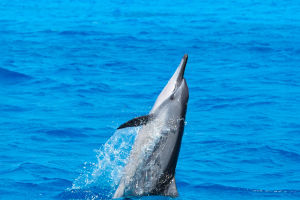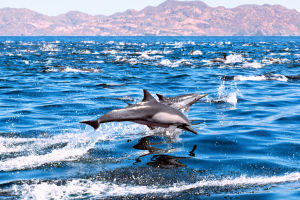When you think of pregnancy, chances are you imagine a female carrying the offspring. But in the underwater world of seahorses, nature flips the script.
In a stunning role reversal, it's the male who becomes pregnant and nurtures the developing young. This unique parenting strategy has fascinated marine biologists and casual observers alike.
Why did evolution favor such an unusual reproductive method? And how do these ocean dads handle the responsibility of growing hundreds of tiny sea creatures inside their bodies?
Meet the Seahorse: A Truly Unique Fish
Seahorses belong to the genus Hippocampus, which includes around 46 species found in shallow coastal waters around the globe. Despite their horse-like heads and curled tails, seahorses are indeed fish. They swim upright, have bony protection instead of scales, and rely on stealth and camouflage to survive.
One of the most distinctive traits of seahorses is their reproductive system, particularly the way it completely turns traditional parenting roles upside down. This reversal is not just a biological curiosity—it's a carefully evolved survival tactic.
The Male Pregnancy Process
Here's how male pregnancy in seahorses works: the female produces eggs and transfers them to a specialized pouch located on the male's abdomen. This pouch isn't just a container—it's a complex, hormone-regulated structure that functions similarly to a mammalian gestational pouch. Once the eggs are inside, the male fertilizes them and seals the pouch shut.
During the incubation period, which can last from 10 to 25 days depending on the species and water temperature, the male's pouch provides oxygen, nutrients, and a controlled environment for the embryos. His body even regulates salinity to prepare the babies for life in the open sea. When the time comes, he experiences contractions and expels fully formed baby seahorses into the water—sometimes dozens or even hundreds at once.
Why Evolution Chose Dads
The evolutionary question is a compelling one: why did seahorses develop this role reversal? Scientists suggest several advantages.
First, having the male handle pregnancy allows females to produce more eggs quickly. While the male is "pregnant," the female can begin forming another clutch of eggs, ready to transfer as soon as the previous batch is born. This strategy maximizes reproductive output—essential in environments where predators can easily wipe out young.
Second, shared parental investment increases the chances of offspring survival. When both parents are involved in reproduction—though in very different ways—it helps ensure the health and growth of the next generation. In the case of seahorses, males play a more active nurturing role than in almost any other fish species.
Hormones and Biological Changes
Male seahorses undergo significant hormonal changes during pregnancy, similar in function to those in mammalian gestation. According to marine biologist Dr. Amanda Vincent, founder of Project Seahorse, the male's body produces hormones like prolactin (also found in mammals) that help regulate pregnancy and stimulate pouch development.
As embryos grow, the father's body adapts—his metabolic rate changes, his pouch thickens and becomes more vascularized, and he prepares for labor-like contractions. These shifts show that pregnancy in male seahorses is far more than a passive process; it's an active, energy-intensive biological transformation.
Birth and Beyond
When the time arrives, the male seahorse anchors himself to a piece of seaweed or coral with his tail and begins rhythmic contractions. In a dramatic display, he “gives birth” by shooting dozens of tiny, fully formed seahorses into the water. The process can last minutes to hours, depending on the number of babies.
After birth, the male has no further role in caring for the offspring. The tiny seahorses are independent from the moment they're born, floating away to face the challenges of ocean life. However, the father often mates again within hours or days, beginning the cycle anew.
Comparisons with Other Marine Life
Seahorses are not entirely alone in this unusual parenting approach. Their close relatives—pipefish and sea dragons—also exhibit forms of male pregnancy. In pipefish, the male may carry eggs on his tail or abdomen rather than in a pouch, but the basic idea remains the same: the male invests heavily in protecting and developing the young.
This trait, found only in the family Syngnathidae, remains one of the rarest and most intriguing forms of reproduction in the animal kingdom.
The Challenges of Seahorse Parenthood
Despite their unique biology, seahorses face many threats. Habitat destruction, overfishing, and pollution put many species at risk. Their unusual reproductive system makes them particularly vulnerable—if too many males are removed from a population, the ability to sustain the species drops sharply.
That's why conservation efforts focus not only on protecting habitats but also on maintaining balanced populations. Marine reserves, education campaigns, and responsible aquarium practices all play a role in preserving these fascinating creatures.
Human Fascination and Symbolism
Humans have long been captivated by seahorses. Their strange appearance, monogamous tendencies, and rare form of male pregnancy have made them symbols of mystery, loyalty, and equality in many cultures.
Some researchers even believe that studying seahorse reproduction could offer insights into hormonal regulation and reproductive health in other species—including humans.
Conclusion: Redefining Parenthood
The story of the seahorse turns our expectations upside down. In a world where we often assign fixed roles based on biology, these remarkable fish remind us that nature is far more flexible and creative than we imagine. By making males the caregivers of the unborn, seahorses challenge our definitions of parenting, survival, and evolution itself.
Have you ever encountered a surprising example of parenting in the animal kingdom? Seahorses show us that love, care, and dedication can come from the most unexpected places—even from a tiny underwater dad with a pouch full of dreams.


